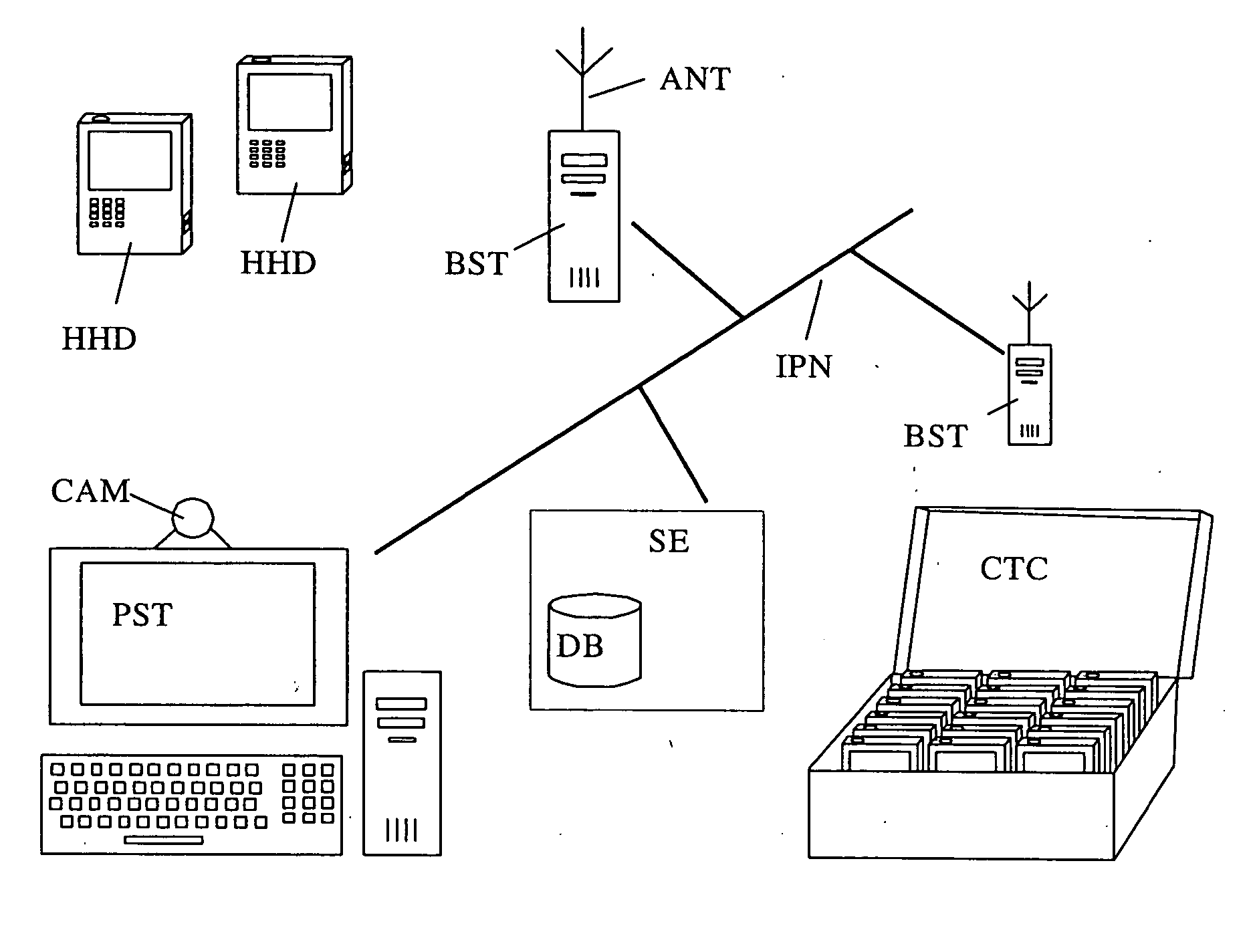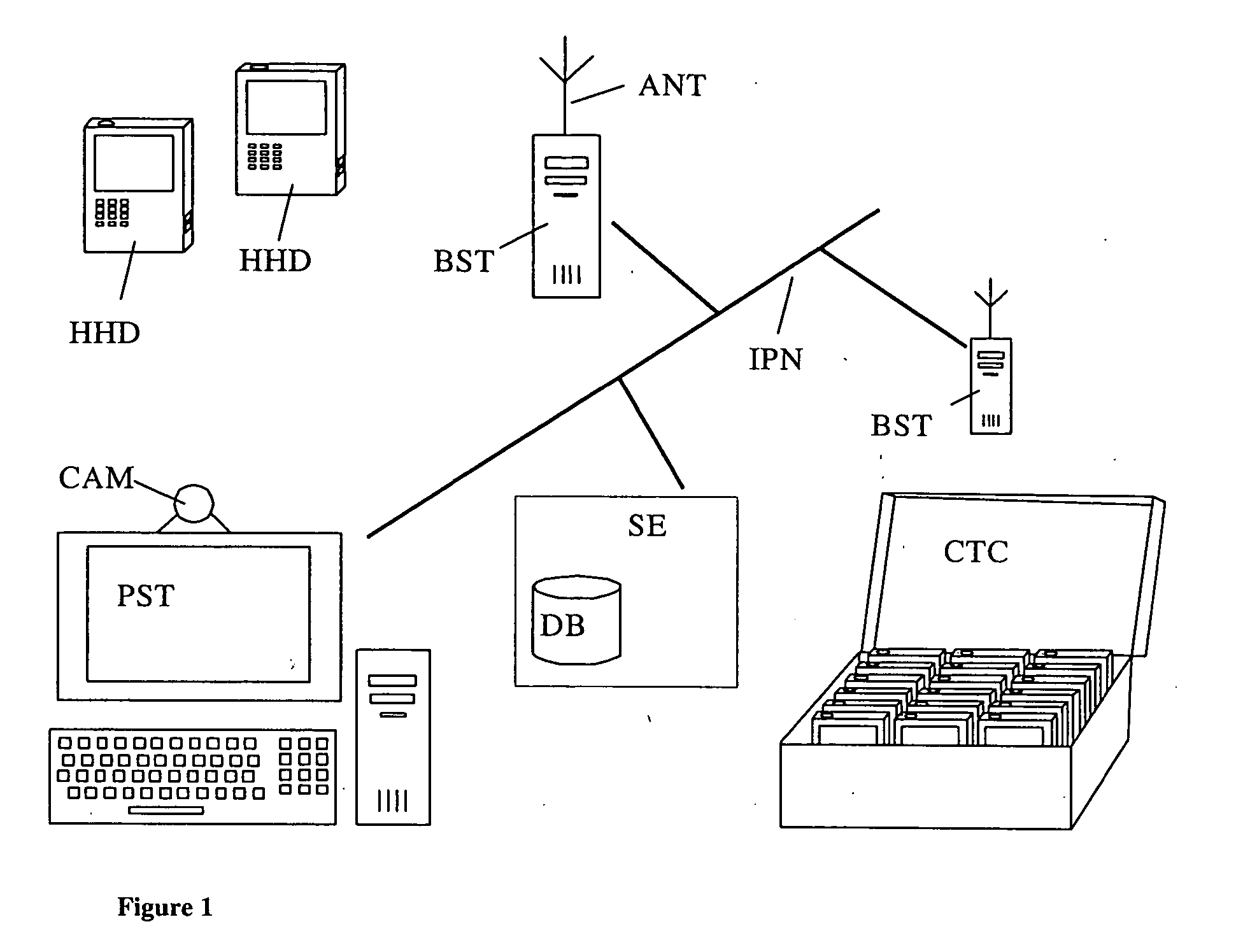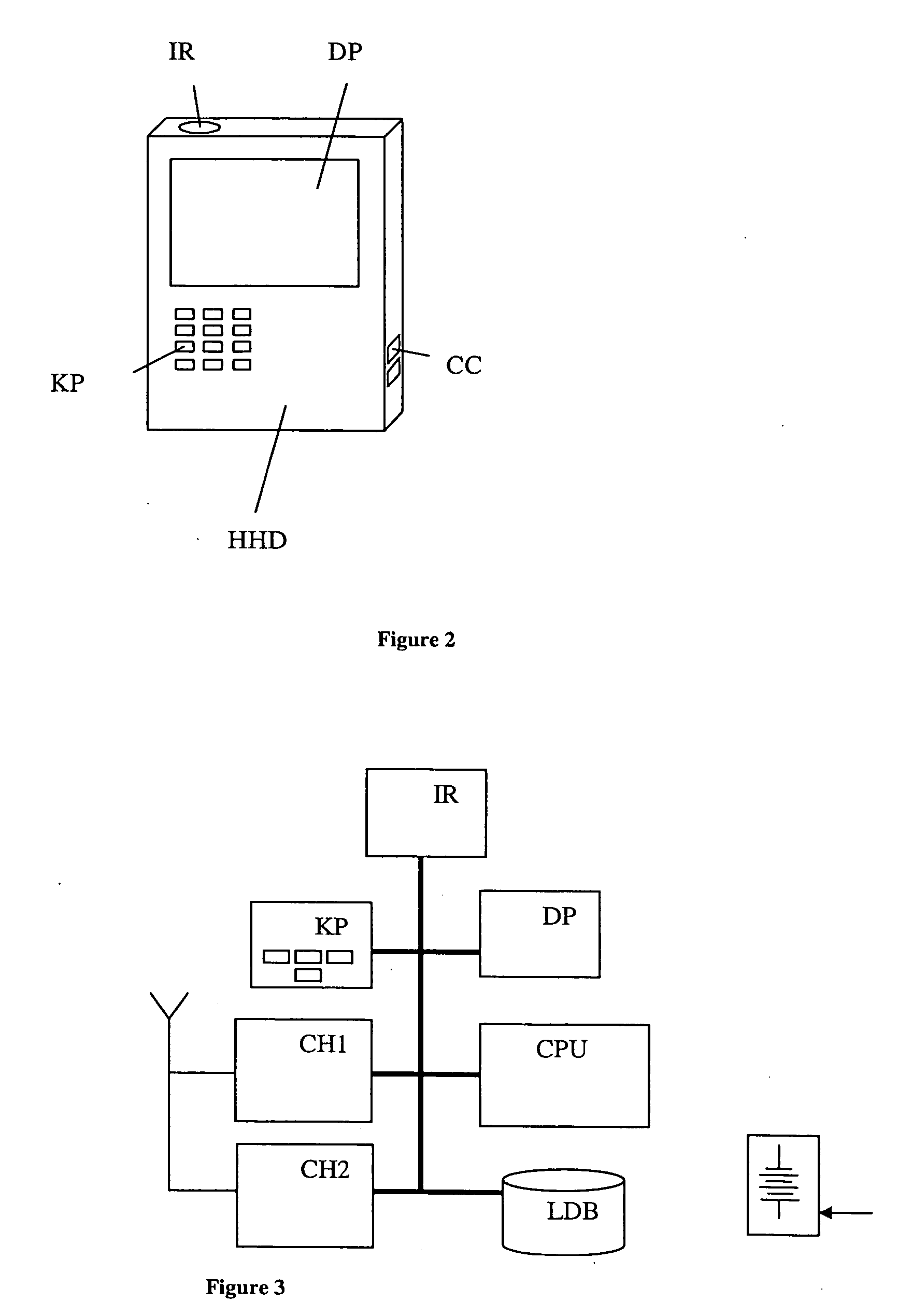Wireless delegate information and communication device, method and system
a technology of information communication device and delegates, applied in the direction of electrical apparatus, multi-digital computer combination, assessment restriction, etc., can solve the problems of inability to update information once it is printed, material needs to be printed too long, and the cost of producing all this material and gathering the necessary data is significan
- Summary
- Abstract
- Description
- Claims
- Application Information
AI Technical Summary
Benefits of technology
Problems solved by technology
Method used
Image
Examples
Embodiment Construction
[0043] These and other objects of the invention will be apparent to those skilled in the art from the following detailed description of the invention, the accompanying drawings and the appended claims.
[0044] In one embodiment of this invention, the system illustrated in the FIG. 1 is composed of a central server SE managing the system, base stations BST and handheld devices HHD used by the delegates. Base stations BST communicate with the server SE via a wired or wireless electronic network and with handheld devices HHD via a wireless network.
[0045] Data related to the event and the delegates is uploaded onto a central database DB in an application server. Data can also be edited manually throughout an event by means of websites generated by the server, e.g. for adding or updating delegate profiles to the database or sending messages to delegates. The server then compiles one or multiple “broadcast” files and sends this file / these files to one or multiple wireless base stations. T...
PUM
 Login to View More
Login to View More Abstract
Description
Claims
Application Information
 Login to View More
Login to View More - Generate Ideas
- Intellectual Property
- Life Sciences
- Materials
- Tech Scout
- Unparalleled Data Quality
- Higher Quality Content
- 60% Fewer Hallucinations
Browse by: Latest US Patents, China's latest patents, Technical Efficacy Thesaurus, Application Domain, Technology Topic, Popular Technical Reports.
© 2025 PatSnap. All rights reserved.Legal|Privacy policy|Modern Slavery Act Transparency Statement|Sitemap|About US| Contact US: help@patsnap.com



